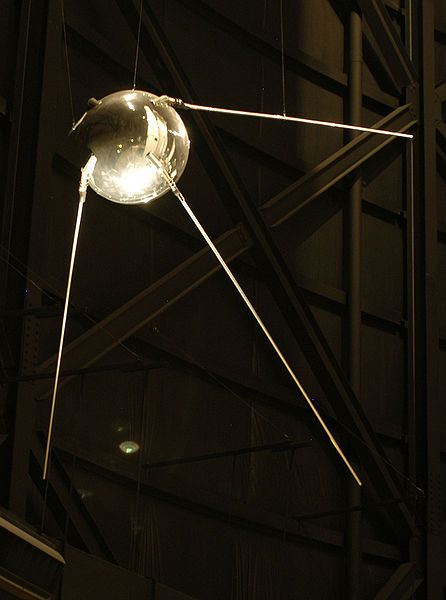Here is a list of Science Blogs ordered by Last Commented, posted by members. A Blog is a journal you may enter about your life, thoughts, interesting experiences, or lessons you've learned. Post an opinion, impart words of wisdom, or talk about something interesting in your day. Update your blog on a regular basis, or just whenever you have something to say. Creating a blog is a good way to share something of yourself with others. Reading blogs is a good way to learn more about others. Click here to post a blog.
 online today!
online today!
What is Reality? - Part4 (Self Understanding and Reality)
The method of approach used towards the attainment of such an understanding is generally the observation of one's thoughts, feelings, desires, etc., in addition to one's behaviour, and the subsequent attempt to find some logical interrelation between these factors on the basis of which a “sensible” deduction can be made. The above-stated factors may be considered to be subjective knowledge, i.e. knowledge of the effects of the mind. Perhaps the stated description of a general method of approach may not be very exact, seeing that each individual decides his/her method of approach. Yet it appears that in most cases, strong emphasis is placed on the use of logical reasoning applied to subjective knowledge. As is commonly stated, most people try to make sense, i.e. logical sense ,of it all. However, this raises the question: Is it possible for the human mind to arrive at a true and complete understanding of itself through the process of logical reasoning seeing it can only acquire subjective knowledge of itself, i.e. knowledge of its effects?
Through the process of logical reasoning, the human mind may try to arrive at an explanation of the causes that produce these effects, but it can never acquire objective knowledge of itself directly in order that it may validate the deductions it made about itself through logical reasoning. For to acquire objective knowledge of itself, i.e. direct knowledge of the causes responsible for its effects, mind would have to break itself into fragments and then make observations about these fragments thereby acquiring direct knowledge about the causes of its effects. This obviously would be impossible since mind would no longer exist, seeing that now there would only be fragments of mind and not mind as a whole to make the observations about its fragments.
 online today!
online today!
What Is Reality?- Part 1 (The Question)
 online today!
online today!
What is Reality? – Part3 (Logic and Physical Sense Experience)
By its very nature, Aristotelian logic must necessarily view a unified whole as fragmentary parts, make observations about these parts and then attempt to link these observations, and thereby obtain an explanation of the whole. The accuracy of the explanation arrived at is dependent not only upon the accuracy of the observations, which are themselves limited in their accuracy due to physical sense limitations, but also upon whether or not all properties of the fragments have been observed. It may be impossible for us to ever know whether or not all properties of the fragments have been observed since it appears the more we widen the range of our physical sense-experience through scientific research, technology, etc., the more we realize how much there is yet unknown. Thus unless we can be 100% certain that we have accurately observed all the properties of all the fragmentary parts of a unified whole, and it seems unlikely that we can ever be, we can never really be certain that a conclusion based on the process of logical reasoning is accurate.
The past and the present illustrate the above-stated fact only too well. In many cases, our scientific experts deduced logically through the data available at that time, that certain chemicals and processes were harmless to humanity and assured us of their safety. Yet today, we are faced with the tragic effects of certain medically prescribed drugs which actually damaged the health of persons who used them, environmental pollution and other ugly monsters that humankind has created.
 online today!
online today!
What is Reality? – Part 2 (Measurement and Reality)
For example, suppose we wish to measure the position of an electron. Consider a microscope powerful enough to make an electron detectable to the human eye. To perform the measurement, it is necessary to illuminate the electron with an intense source of light. Because of the extremely minute mass of the electron, the energy imparted by the source of light is of sufficient magnitude to cause a noticeable displacement in the electron's position, so that it would no longer be in the position in which it was prior to the illumination; nevertheless, such illumination is necessary for the measuring process. This same effect occurs in all measuring processes in which energy is added to or taken from a system as is generally the case.
Thus, it seems that even the ability of measurement to define reality is questionable since the very act of measurement itself generally introduces an error, human or otherwise, into the measurement to be made.
 online today!
online today!
Airliners DO NOT Fly! They Levitate! PROOF -
Passengers are ripped off for $BILLIONS by being told 1/2 the price of a ticket covers the cost of fuel.
THAT'S A LIE!!
Because airliners DO NOT use fuel. They LEVITATE!!
Like bees.
 online today!
online today!
Climate Change Is NOT The Problem.
The Problem Is Global Industrial Civilization...
Changing Climate Is The SOLUTION.

All hail Canada - we have a new kingdom of life - make way for the Hemimastigotes
This means that unlike bacteria, they have complex cells that contain specialized organelles.
However, hemimastigotes lack mitochondria.
Hemimastigotes are more different from all other living things than animals are from fungi
Emily Chung · CBC News · Posted: Nov 15, 2018 3:40 PM ET | Last Updated: November 16
Canadian researchers have discovered a new kind of organism that's so different from other living things that it doesn't fit into the plant kingdom, the animal kingdom, or any other kingdom used to classify known organisms.
Two species of the microscopic organisms, called hemimastigotes, were found in dirt collected on a whim during a hike in Nova Scotia by Dalhousie University graduate student Yana Eglit.
A genetic analysis shows they're more different from other organisms than animals and fungi (which are in different kingdoms) are from each other, representing a completely new part of the tree of life, Eglit and her colleagues report this week in the journal Nature.
"They represent a major branch… that we didn't know we were missing," said Dalhousie biology professor Alastair Simpson, Eglit's supervisor and co-author of the new study.
"There's nothing we know that's closely related to them."
In fact, he estimates you'd have to go back a billion years — about 500 million years before the first animals arose — before you could find a common ancestor of hemimastigotes and any other known living things.
The hemimastigotes analyzed by the Dalhousie team were found by Eglit during a spring hike with some other students along the Bluff Wilderness Trail outside Halifax a couple of years ago. She often has empty sample vials in her pockets or bags, and scooped a few tablespoons of dirt into one of them from the side of the trail.
Back at the lab, she soaked the soil in water, which often revives microbes that have gone dormant, waiting for the next big rainstorm. Over the next few weeks, she checked on the dish through a microscope to see what might be swimming around.
Then, one day, about three weeks later, she saw something that caught her eye — something shaped like the partially opened shell of a pistachio. It had lots of hairs, called flagella, sticking out. Most knomicrobes with lots of flagella move them in co-ordinated waves, but not this one, which waved them in a more random fashion.
"It's as if these cells never really learned that they have many flagella," Eglit said with a laugh. She had seen something with that strange motion once before, a few years ago, and recognized it as a rare hemimastigote.
Hemimastigotes were first seen and described in the 19th century. But at that time, no one could figure out how they fit into the evolutionary tree of life. Consequently, they've been "a tantalizing mystery" to microbiologists for quite a long time, Eglit said.
Like animals, plants, fungi and ameobas — but unlike bacteria — hemimastigotes have complex cells with mini-organs called organelles, making them part of the "domain" of organisms called eukaryotes rather than bacteria or archaea.
About 10 species of hemimastigotes have been described over more than 100 years. But up until now, no one had been able to do a genetic analysis to see how they were related to other living things.......
For a fuller story and electron microscopic images of the beasts go to the following link;
 online today!
online today!
Facinating
The purpose of the Ephod
Back in the 1920s the US Mason brotherhood realized the description of the Tabernacle's construction and it's use were those of a two way voice radio. Adjustment or tuning of the frequency was done by adjustment of the golden curtain threads. Whatever, today we will talk about the garments used by the Levite priests charged with maintaining the device for Moses.
Their garment is called an Ephod. The book of Exodus provides specifics as to the manufacture of the Ephod. Gold is used extensively in the manufacture of an Ephod. Gold is a very efficient shielding against radioactive materials. Today we use lead, but if you have it, Gold is just as good.
You will see below a picture of what we think an Ephod looked like and also a picture of a modern lead apron as used by technicians who work around radio-actives.
Modern technicians working around radioactivity wear devices called dosimeters to measure the amount of radiation they are exposed to. Exodus 28 describes a breast plate of gem stones used by the early Levite priests. Specific gemstones and minerals are described and to be placed in a specific order upon the breast piece.
For the first two thousand years of Christianity an unusual feature of these gem stones was not known.
Specifically, each of the stones reacts in a visually noticeable fashion to the presence of radioactivity. Further the amount of reaction varies as the intensity of the radiation exposure changes.
Exodus 28:17 - 20
And thou shalt set in it settings of stones, even four rows of stones: the first row shall be a sardius, a topaz, and a carbuncle: this shall be the first row. And the second row shall be an emerald, a sapphire, and a diamond. And the third row a ligure, an agate, and an amethyst. And the fourth row a beryl, and an onyx, and a jasper: they shall be set in gold in their inclosings.
Here is some of what we know about some of those stones today and how they behave in the presence of increasing amounts of radioactivity.
Topaz - Turns blue, then brown as the radiation exposure intensifies
Emerald - Turns deep green, but under fast neutron bombardment it turns clear.
Sapphire - Turns gold colored with a significant decrease in electrical resistance.
Diamond - Becomes yellow then green in color.
Agate - Turns magnetic and glows blue in the dark
Beryl - Turns golden yellow.
Onyx - Glows brightly after exposure to strong radiation sources.
There are 12 different gemstones used in a Levite priest's breastplate. I have not googled the effects of radiation on all of them, but from the 7 I name above it is obvious the priest's breastplate made a very simple, yet amazingly accurate and sophisticated multi colored dosimeter capable of revealing with just a quick glance how 'hot' an environment the wearer had been exposed to.. <It is worth noting that Turkish and Brazilian Onyx stones are used today in fashioning some forms of modern high exposure dosimeter devices.>
Knowledge of how the Tabernacle worked, and why the Levite priests dressed as they did and what they did was shared only by a few.
Ephod
Modern Radiation worker's uniform
 online today!
online today!
SPUTNIK...
The batteries lasted for 21 days and Sputnik continued it's decaying orbit around earth until it reentered the atmosphere and burned up on January 4th 1958.
The photo below is a replica of Sputnik that is on display at the National Museum of the United States Air Force, Missile & Space Gallery in Dayton, Ohio.
Sputnik kicked off space exploration that started a rivalry between Russia (the former Soviet Union) and the United States.
Sputnik is the Russian word for satellite.
A Blog is a journal you may enter about your life, your thoughts, interesting experiences, or lessons you have learned. It's your own page on Connecting Singles that you can update on a regular basis, or just whenever you have something to say. You can write about an opinion, impart words of wisdom, or talk about something interesting in your day. Creating a blog is a good way to share something of yourself with Connecting Singles members. Reading blogs is a good way to learn more about members you have met here. Please be sure to read the blog rules before posting.
Would YOU like to post a blog on Connecting Singles? Have you written blogs that you'd like to share with other members? Posting your blogs shows your skill and creativity and helps members get to know you better. Your blog will appear on the Connecting Singles Blogs page and also in a link on your profile page. Click here to post a blog »


